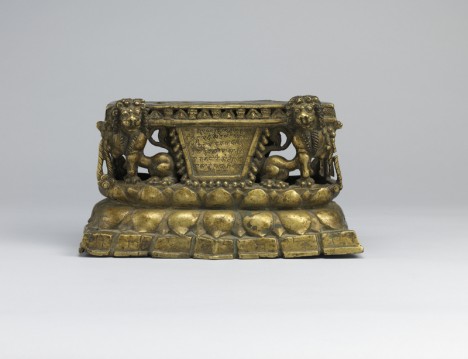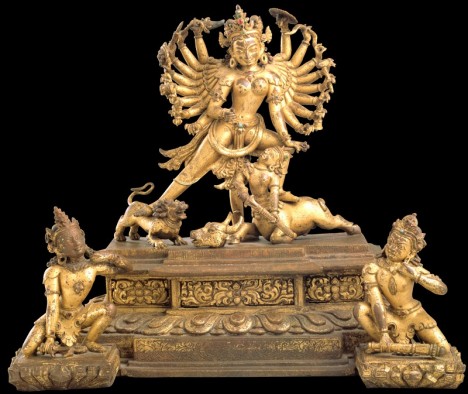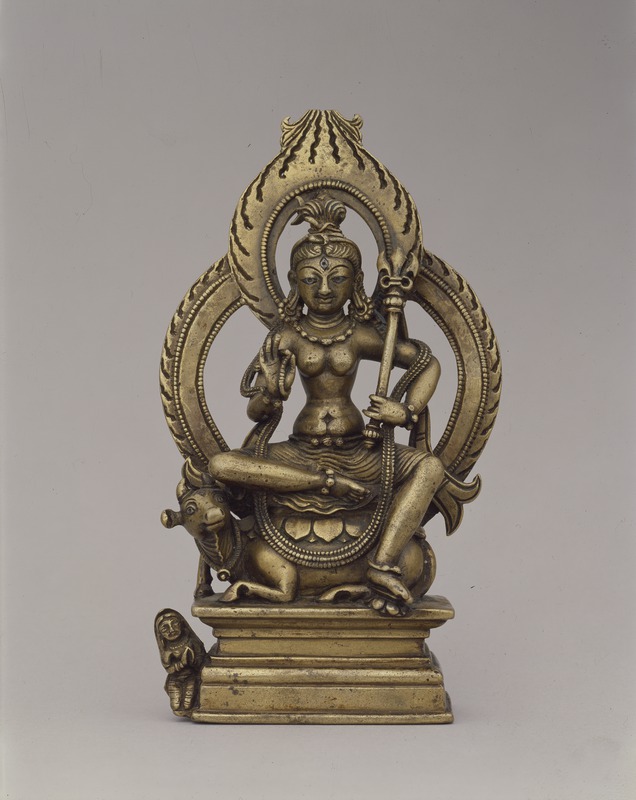
If you’ve ever had an animal companion, you already know what an important role pets and animals can play in daily life. In both Hinduism and Buddhism, gods and goddesses are frequently associated with an animal that serves as their vehicle or mount. Known as vahana in Sanskrit, these animals exhibit the attributes that the gods personify.
What’s a vahana?
Animal protectors and companions are a common trope in many cultures, religions, and stories. Think of the patronus in the Harry Potter series, daemons from the Golden Compass series, and even Ash’s Pikachu and other Pokémon. In Hinduism and Buddhism, some of these animal friends are mythic animals while others are real-world animals. They not only play key roles in the stories of their corresponding gods, but they help art historians identify the deities in art, and can even develop a significant following of their own.
Here are some vahana you can easily spot at the Rubin Museum:
Lion

Across many world cultures, the lion has been a symbol of royalty and in India and the Himalayas the iconography is much the same. Though the actual sculpture of the deity is missing from the throne base pictured above, art historians presume that it held either a sculpture of the Buddha Shakyamuni or Buddha Vairochana, indicated by the lions that support the throne. Though the young Siddhartha renounced his royal status, many of the symbols found in depictions of the Buddha Shakyamuni (including lions) suggest a regal status. The inscription on the throne base above indicates that the object was originally patronized by a royal family, further inspiring the artist to employ regal symbols.
Bull

Sometimes, a vehicle can show the connection between two different gods. Above is a sculpture of Parvati in her form known as Kashmira, the godly personification of the region of Kashmir. Several of this sculpture’s attributes display Kashmira’s connection with her husband Shiva: the goddess has a crescent moon in her hair, holds a trident, and wears a tiger skin skirt—all identifying attributes of Shiva. However, the most telling and endearing connection to her husband is her vehicle, Shiva’s beloved bull, Nandi. A popular god in his own right, sculptures of Nandi generally sits outside of Shiva temples serving as a gatekeeper. Followers of Shiva also worship him too and he can be the focus of puja, or ritual offerings.
Turtle? Mahakara?

This beautiful copper sculpture of a goddess is currently on display in our special exhibition Nepalese Seasons: Rain and Ritual. However, since she doesn’t have a vahana, we don’t know which goddess she is! According to Curator Guatama Vajracharya, it’s either the goddess Shri or Lakshmi. Shri would be riding the mythical mahakara while Lakshmi would be riding a turtle. The statue is a reminder of the importance of animal vehicles in identifying gods and goddesses.

See more of the Museum’s vahanas on a Rubin Museum exhibition highlights tour.

